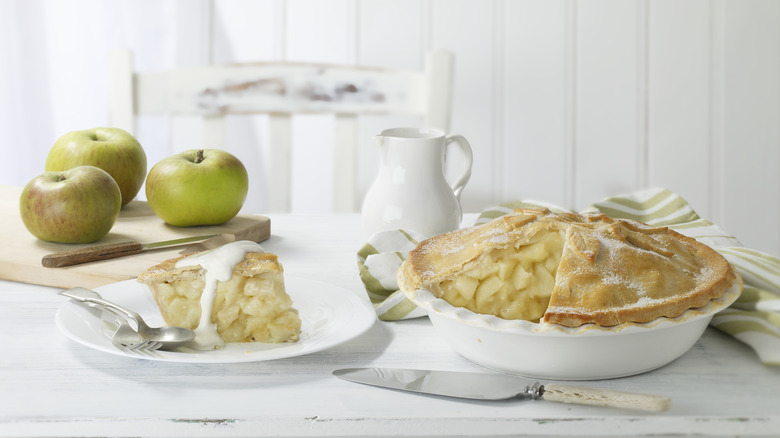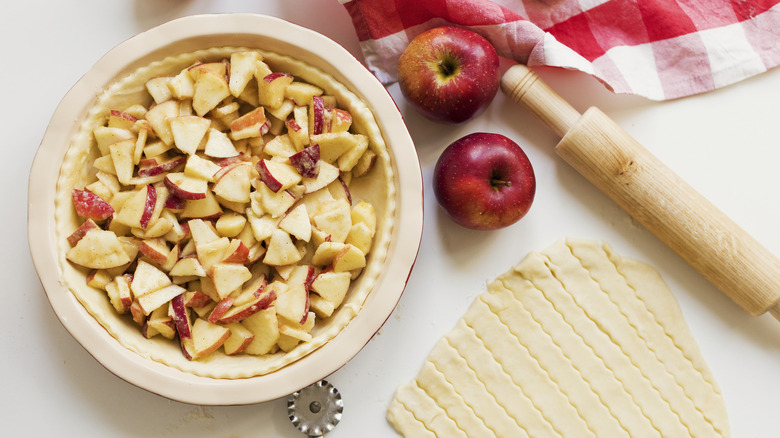For Even Better Apple Pie, You Should Skip One Step
We may receive a commission on purchases made from links.
The comforting aroma of a freshly-baked all-American apple pie is second to none. Tender baked fruit, a flaky crust, and a crunchy, sugary topping in every slice? Sign us up! However, there's one annoying thing that deters us from preparing a home made apple pie every weekend; all that laborious peeling, coring, and chopping. Fortunately, we can skip one of these steps to make an even better apple pie, according to Anna Gordon, Chef, Founder, and Co-owner of The Good Batch, who swears by using unpeeled apples in her bakes. Gordon says "assuming the apples are locally grown or organic, I recommend leaving the skin on! The peel adds extra flavor and bite to the pie."
Making a basic apple pie is mostly an assembly job. All you need to do is coat your sliced apples in sugar and a thickener, such as cornstarch, before piling them into your pastry-lined fluted pie plate, topping with another sheet of pastry, and sprinkling on some sugar. This process is far quicker if you simply wash and slice your apples instead of spending extra time removing the peel. However, as Gordon mentions, if you want to leave the skin on your apples it makes sense to select an organic variety. This is because the soil organic fruit is grown in has to be free from synthetic pesticides and fertilizers. Fruit that isn't organic and is farmed with chemical-based pesticides (to ward off insects and fungi) can have an unpleasant residue on its surface.
Apple peel tannins imbue a fruit pie with a complex flavor
Apple skin is packed with flavor and lends an apple pie a complex depth and aroma that would otherwise be lost through peeling. This is because it contains chemical compounds called tannins, which imbue the filling with a mild note of astringency that balances out the tart-sweetness of the apple flesh. Darker-colored apple skins, such as Cortlands, also impart an appetizing blush to the pie filling, so it has an almost caramel-like color once baked. Moreover, leaving the skin on your apples, whether it be tangy Granny Smiths or crisp Braeburns, helps each chunk of fruit to retain its structure and bite instead of breaking down into a homogenous mush in the heat of the oven. And as seeing as the most the most fiber and healthy phytochemicals reside in the skin, you're also boosting the health benefits of your dessert with zero effort.
Finally, skipping the step of washing your apples also means you have more time on your hands to take your pie crust to the next level or experiment with new flavors. For example, this Dutch apple pie features a 4-spice blend of cinnamon, cloves, nutmeg, and ginger to lend it warmth and heat. You could also try making a lattice-topped apple pie so the vibrant skin of the apples peeks through the trellis-like design.

